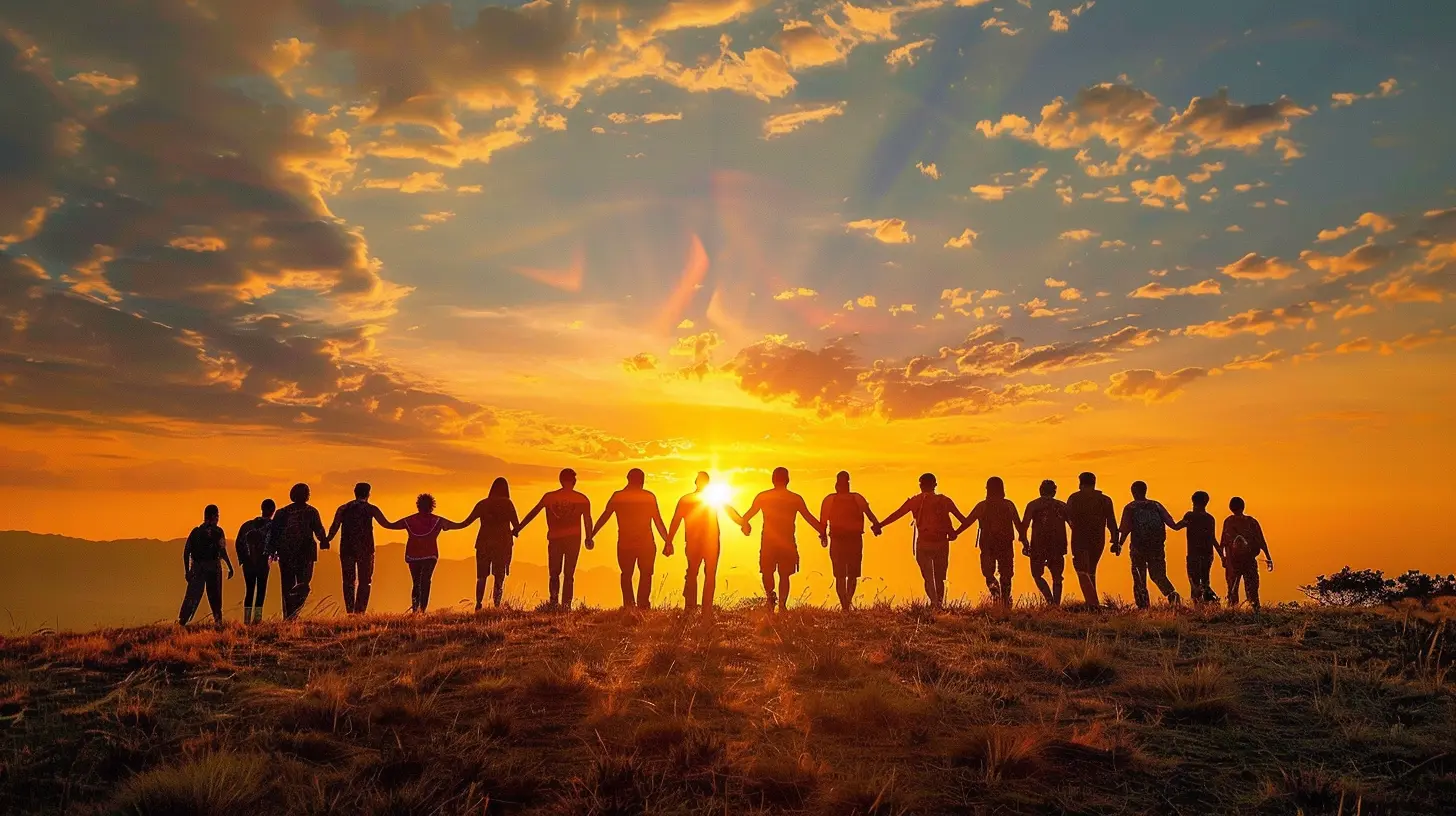Problem Solving in Groups: Benefits and Challenges
20 June 2025
Ever found yourself stuck on a problem and suddenly, someone else says something simple that makes everything click? That’s the magic of group problem solving. When people come together to tackle a complex issue, amazing things can happen. But let’s be honest—working with others isn’t always straightforward. Group problem solving has big benefits, but also a fair share of challenges.
In this article, we're diving deep into the world of group problem solving. Whether you're a student, team leader, educator, or just someone working on a collaborative project, understanding how group dynamics influence problem-solving can change the way you work—literally. Let’s take a walk through the twists and turns of this fascinating process.
What Is Group Problem Solving?
Let’s start from the basics. Group problem solving is exactly what it sounds like—multiple individuals coming together to find a solution to a common problem. It could be brainstorming ideas for a school project, developing a marketing strategy, or figuring out how to rebuild a community center.Sounds simple enough, right? Not always. It combines different perspectives, skills, and personalities into one melting pot of brainstorming, debating, and (hopefully) decision-making.
Why Do We Solve Problems in Groups Anyway?
Solo work has its perks—zero distractions, full control, and a clear vision. So why throw more people into the mix?1. Different Minds, Fresh Ideas
Everyone thinks a little differently. Some people are logical thinkers, others are creative brainstormers. When you gather a group, you’re pulling in a spectrum of thoughts and ideas. It's like giving your brain a power boost.Think of it like making a smoothie. One fruit is good, but mix in five different fruits and you've got something far more flavorful. Ideas are like that in a group—you blend them together and end up with something way better than any one person could’ve made alone.
2. Division of Labor
Let’s be real—doing everything by yourself is exhausting. In group settings, people can divvy up tasks based on their strengths. This not only speeds things up but also leads to higher-quality solutions. It’s the classic “work smarter, not harder” scenario.3. Motivation and Accountability
There’s something energizing about not wanting to let others down. It’s like going to the gym with a friend—you’re more likely to show up because someone’s counting on you. Groups tend to hold each other to higher standards, which keeps motivation levels up.4. Better Decision-Making
More eyes on a problem usually means fewer blind spots. Group discussions often help in identifying risks and thinking through scenarios that an individual might miss. It’s like having extra filters for your ideas.
The Flip Side: Challenges of Group Problem Solving
Before we romanticize teamwork too much, let’s look at the not-so-glamorous side of group problem solving. Because working in groups can sometimes feel like herding cats.1. Groupthink
Ever been in a meeting where everyone agrees with the most vocal person just to avoid conflict? That’s groupthink. It’s dangerous because it kills creativity and leads to poor decisions. People start prioritizing harmony over critical thinking, which defeats the purpose of collaboration.2. Unequal Participation
There’s always that one person who dominates every discussion and another who barely speaks. Unequal participation is a common problem, and it limits the range of ideas and perspectives on the table.3. Conflict and Personality Clashes
Put five different personalities in a room and at some point, sparks might fly. Sometimes, tension can lead to better ideas, but if not handled properly, it can derail the entire problem-solving process.4. Time-Consuming
Let’s face it—getting everyone together, listening to opinions, and reaching consensus can take forever. Deadlines don’t wait, and group problem-solving can sometimes drag on unnecessarily, especially without a clear direction.
The Secret Sauce: Ingredients of Effective Group Problem Solving
So how do you make group problem solving work? It’s not magic. With the right ingredients, you can turn a chaotic brainstorming session into a productive problem-solving powerhouse.1. Clear Objectives
Everyone should know what the goal is right from the start. It’s like setting a GPS before starting a road trip—if you don’t know where you’re going, you’ll just drive in circles.2. Open Communication
Encourage an environment where all voices are heard. That means active listening, asking questions, and respecting different viewpoints—even the unpopular ones. Sometimes, the craziest idea sparks the best solution.3. Defined Roles
Assign roles like facilitator, note-taker, and timekeeper. This keeps the group organized and makes sure everyone contributes in a meaningful way. It’s like a sports team—everyone has a position to play.4. Constructive Conflict
Disagreement isn’t always bad. In fact, it’s necessary. But it should be respectful and focused on ideas, not on people. Think of it as a healthy debate, not a tug-of-war.5. Decision-Making Frameworks
Sometimes the group might get stuck in analysis paralysis. Having frameworks like voting, consensus, or even “majority rules” helps in making decisions more efficiently.Real-World Examples of Group Problem Solving
Still skeptical about whether problem solving in a group is worth the effort? Let’s look at a few real-world scenarios where groups made an impact.Example 1: Student Project Teams
In classrooms, students often work on group assignments. The ones that succeed usually have clear communication, set deadlines, and allow everyone to contribute. It mimics the workplace and teaches valuable collaboration skills.Example 2: Crisis Management Teams
During natural disasters or emergencies, teams from various sectors (government, medical, logistics) come together to solve complex problems quickly. The diversity of expertise often leads to life-saving decisions.Example 3: Corporate Brainstorming Sessions
Businesses often rely on team meetings to come up with product ideas or solve customer issues. These sessions are goldmines for innovation—provided the team knows how to manage diverse opinions and encourage creativity.Strategies to Overcome Group Problem Solving Challenges
Now that we know the bumps on the road, let’s equip ourselves with some strategies to navigate them.1. Use Brainstorming Techniques
Structured brainstorming methods like "Round Robin" or "Mind Mapping" can ensure that everyone has a chance to speak and share their views.2. Leverage Technology
Tools like Trello, Slack, or Google Docs can streamline communication and task management. These platforms keep everyone in the loop and accountable.3. Set Ground Rules
Establish norms early on about how meetings will be conducted, how decisions will be made, and how conflicts will be handled. This sets the tone for the entire collaboration.4. Encourage Diverse Perspectives
Actively invite input from quieter members. Sometimes, the most out-of-the-box solutions come from the least expected sources.5. Practice Emotional Intelligence
Empathy, patience, and self-awareness go a long way in group settings. The more emotionally intelligent the group, the smoother the collaboration.When Is Group Problem Solving the Best Option?
Group problem solving is great—but it’s not always the answer. Let’s look at when it works best.- When the problem is complex and multifaceted
- When diverse expertise or perspectives are needed
- When buy-in from multiple people is required for implementation
- When creativity and idea generation are necessary
On the flip side, if the task is straightforward or time-sensitive, an individual approach might be more effective.
Final Thoughts
Problem solving in groups can be a double-edged sword. On one end, it unlocks creativity, fuels innovation, and taps into collective intelligence. On the other, it can lead to delays, conflict, and decision paralysis.The trick lies in knowing when, how, and with whom to collaborate. By understanding the dynamics at play and putting the right strategies in place, group problem solving can become a powerful tool for learning, growth, and success.
So next time you’re faced with a big challenge—don’t go it alone. Harness the power of the group, but be smart about how you do it.
all images in this post were generated using AI tools
Category:
Problem SolvingAuthor:

Monica O`Neal
Discussion
rate this article
2 comments
Damian McGehee
Interesting insights on group problem-solving! I'm curious about how differing perspectives enhance creativity. What strategies can help mitigate challenges while maximizing collaboration in diverse teams?
June 22, 2025 at 10:30 AM

Monica O`Neal
Thank you for your comment! To enhance creativity and collaboration in diverse teams, consider strategies like fostering an inclusive environment, encouraging open communication, and utilizing structured brainstorming techniques. Additionally, setting clear goals can help mitigate challenges while leveraging diverse perspectives.
Soliel Smith
This article insightfully highlights the dynamic interplay between collaboration and conflict in group problem-solving. Understanding both benefits and challenges allows us to enhance teamwork effectiveness and foster a more productive learning environment. Well done!
June 22, 2025 at 2:37 AM

Monica O`Neal
Thank you for your thoughtful comments! I'm glad you found the insights on collaboration and conflict valuable for enhancing teamwork.


